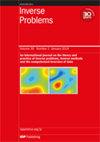通过影响区对连续梁系统结构设计模型进行机器学习
IF 2
2区 数学
Q1 MATHEMATICS, APPLIED
引用次数: 0
摘要
这项研究从逆向问题的角度,为连续梁系统开发了机器学习结构设计模型。在划分了正向、优化和反向机器学习运算符之后,研究提出了一种基于最新开发的影响区概念的新方法,与传统结构设计方法相比,该方法代表了一种根本性的转变。这种方法旨在构思一种非迭代结构设计模型,用于预测任意系统尺寸的连续梁系统的截面要求。在生成已知解决方案的数据集后,确定适当的神经网络架构,对其进行训练,并针对未见数据进行测试。结果表明,横截面属性预测的平均绝对百分比测试误差为 1.6%,同时神经网络对不同尺寸的结构系统具有良好的泛化能力。在这项工作中生成的 CBeamXP 数据集和相关的基于 python- 的神经网络训练脚本可在开源数据存储库中获取,以实现结果的可重复性,并鼓励进一步的研究。本文章由计算机程序翻译,如有差异,请以英文原文为准。
Machine learning for structural design models of continuous beam systems via influence zones
This work develops a machine learned structural design model for continuous beam systems from the inverse problem perspective. After demarcating between forward, optimisation and inverse machine learned operators, the investigation proposes a novel methodology based on the recently developed influence zone concept which represents a fundamental shift in approach compared to traditional structural design methods. The aim of this approach is to conceptualise a non-iterative structural design model that predicts cross-section requirements for continuous beam systems of arbitrary system size. After generating a dataset of known solutions, an appropriate neural network architecture is identified, trained, and tested against unseen data. The results show a mean absolute percentage testing error of 1.6% for cross-section property predictions, along with a good ability of the neural network to generalise well to structural systems of variable size. The CBeamXP dataset generated in this work and an associated python-based neural network training script are available at an open-source data repository to allow for the reproducibility of results and to encourage further investigations.
求助全文
通过发布文献求助,成功后即可免费获取论文全文。
去求助
来源期刊

Inverse Problems
数学-物理:数学物理
CiteScore
4.40
自引率
14.30%
发文量
115
审稿时长
2.3 months
期刊介绍:
An interdisciplinary journal combining mathematical and experimental papers on inverse problems with theoretical, numerical and practical approaches to their solution.
As well as applied mathematicians, physical scientists and engineers, the readership includes those working in geophysics, radar, optics, biology, acoustics, communication theory, signal processing and imaging, among others.
The emphasis is on publishing original contributions to methods of solving mathematical, physical and applied problems. To be publishable in this journal, papers must meet the highest standards of scientific quality, contain significant and original new science and should present substantial advancement in the field. Due to the broad scope of the journal, we require that authors provide sufficient introductory material to appeal to the wide readership and that articles which are not explicitly applied include a discussion of possible applications.
 求助内容:
求助内容: 应助结果提醒方式:
应助结果提醒方式:


